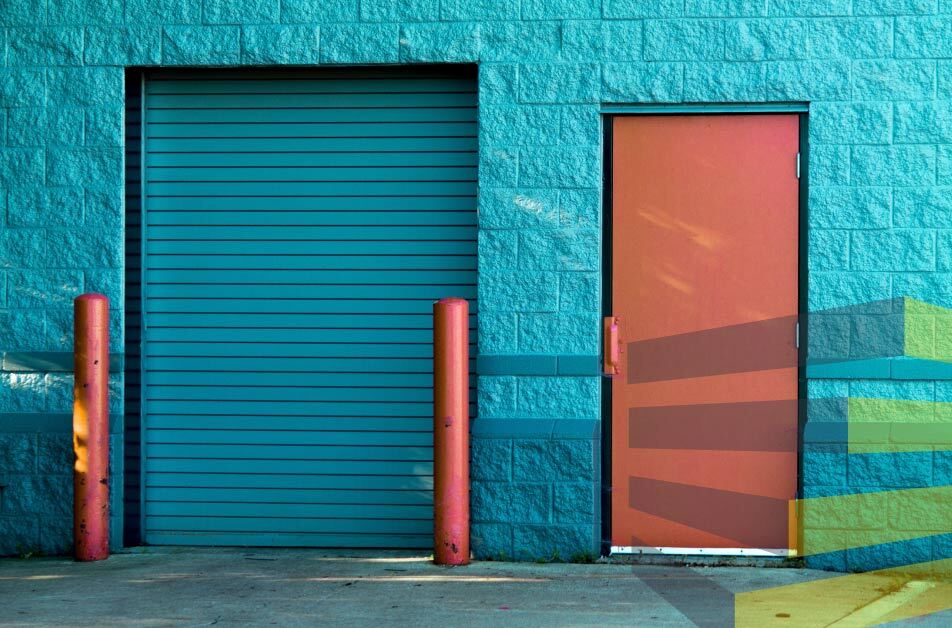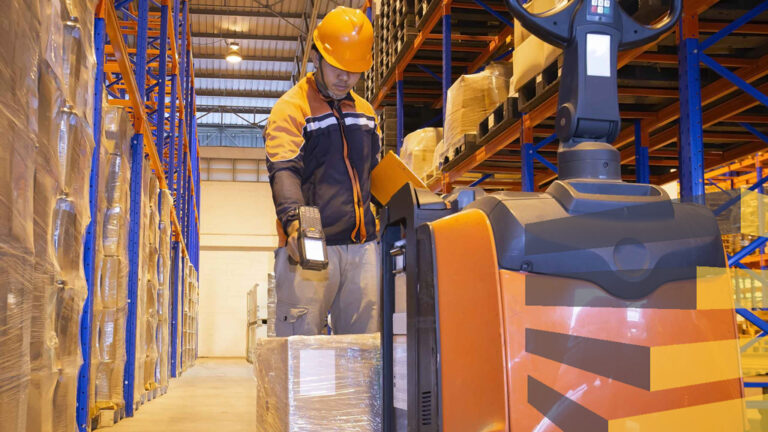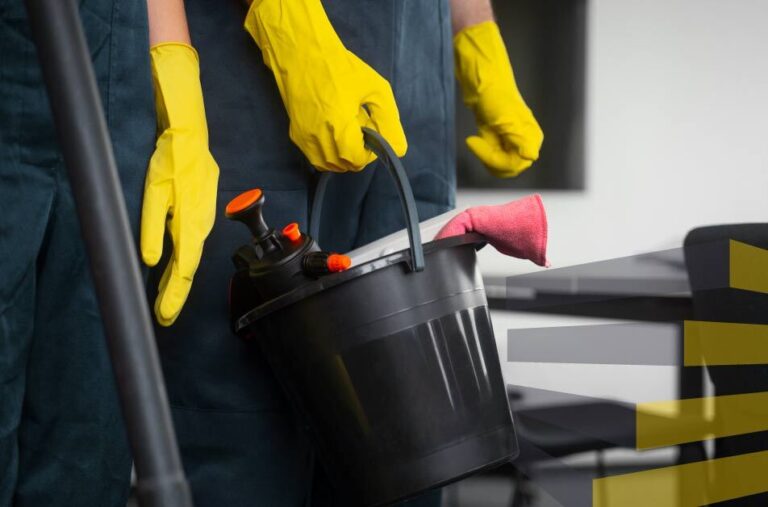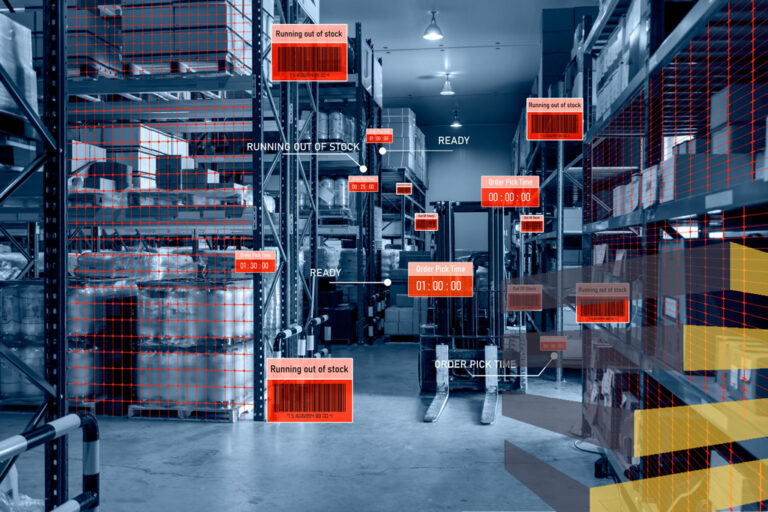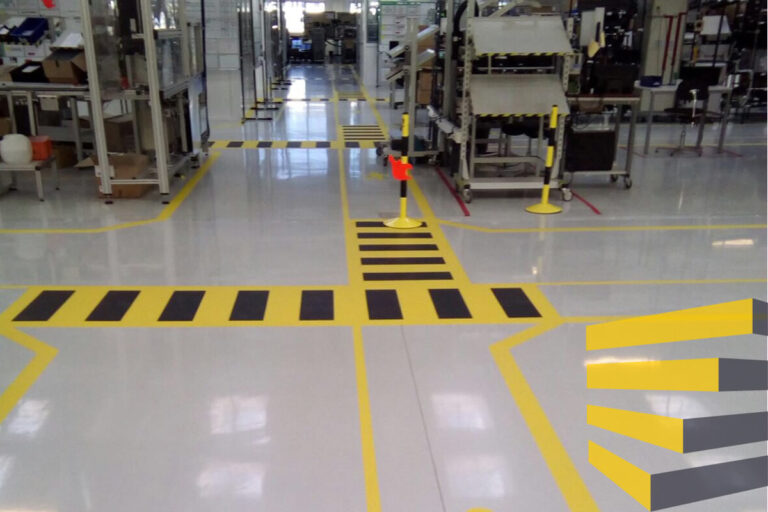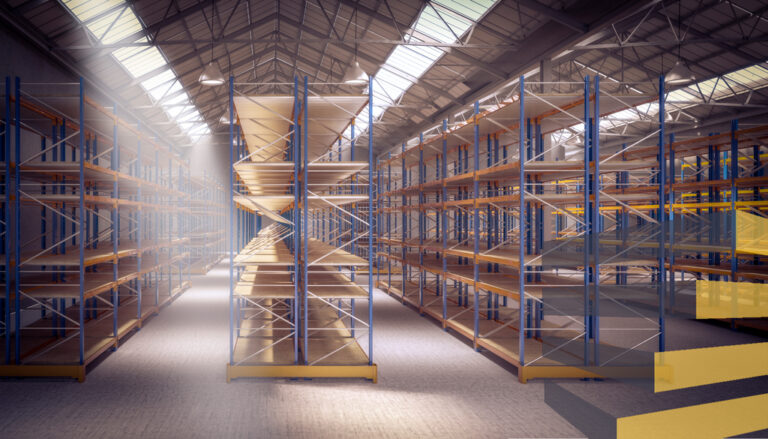Table of Contents
Anyone setting up a warehouse in the Mexican market that will have vehicles or heavy goods moving around will want to source and install high-quality security bollards in Mexico.
These low posts help protect infrastructure, delimit areas inside and outside the facility, and keep people safe. That’s why they are often a key element of a Mexican warehouse setup, along with other types of protection barriers.
Security bollards in Mexico have different heights and diameters and are constructed with various materials to increase their level of protection. These elements are usually anchored to the floor, but you can also find removable, retractable, and even decorative ones.
While warehouse bollards have many shapes and uses, they are only one part of safety infrastructure. Other protective barriers such as guardrails, column guards and retractable barriers are also necessary for the installations.
Knowing about security bollards in Mexico and other types of protective elements will help you optimize your logistics business operations and comply with Mexican standards established by the Secretariat of Labor and Social Welfare (STPS).
Contact us if you need a distributor or installer of security bollards in Mexico and other types of protective barriers. We offer the same services in the United States and Brazil.
What do the regulations say about security bollards in Mexico?
In Mexico, the Secretariat of Labor and Social Welfare (STPS) has created a series of technical regulations to ensure the safety of people in their workplaces. These standards are known as Normas Oficiales Mexicanas (NOM), and the most relevant for the handling and storing of materials is NOM 006 STPS.
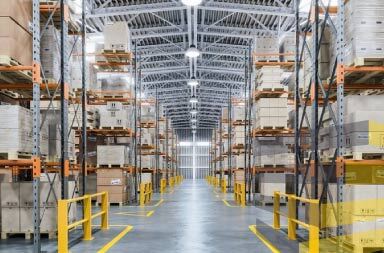
NOM 006 establishes all the conditions that must be met in work centers where materials are handled and kept to prevent accidents and take care of the facilities. This is true whether it is a manual or automatic process.
In addition, it indicates in detail the obligations of the employer and the workers. Everyone in the team should be aware of what they must do to maintain the safety of the warehouse or distribution center.
Regarding the use and placement of security bollards in Mexico and other types of protective barriers, as well as signage for warehouses in Mexico, NOM 006 states that one of the employer’s responsibilities is to “use protective barriers or stops on the platforms or docks where they operate to avoid fall risks.”
Thus, the professional placement of security bollards in Mexico is crucial to protect employees, goods, and facilities. It is also important to avoid legal complications arising from non-compliance.
6 types of security bollards in Mexico
There are several types of commonly used security bollards in Mexico, in a range of materials and specifications. Choosing between them will depend on the individual needs of each operation and the budget available. These are the most popular:
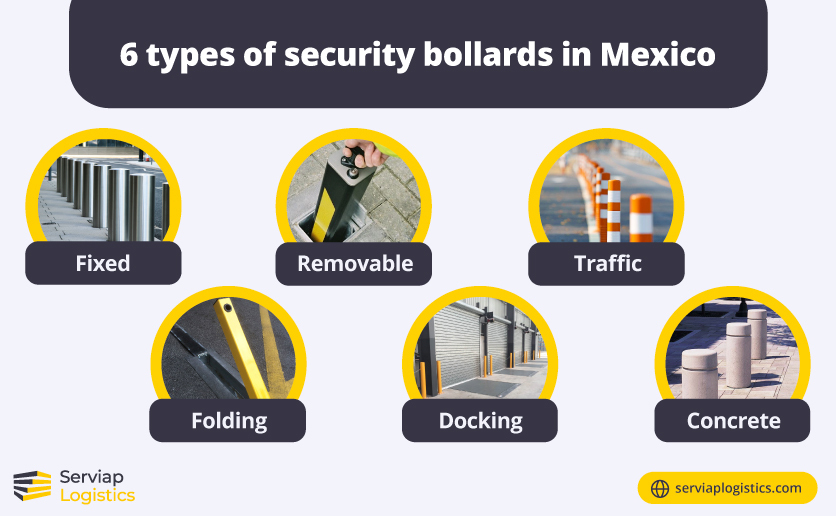
1) Fixed bollards
Thanks to the high protection they provide wherever they are placed, the most commonly used security bollards in Mexico inside and outside warehouses and distribution centers are usually anchored to the floor with bolted metal plates.
In the same way, and in case of requiring superior resistance to the impact of vehicles transporting goods, such as forklifts and cranes, they can also be installed using systems that involve digging a hole in the floor, placing the bollard, and fixing it in place with concrete.
2) Folding bollards
If you want to delimit traffic zones inside and outside the warehouse, the most effective security bollards in Mexico are the folding ones. These protective barriers can be hidden in the ground and facilitate the passage of emergency vehicles, such as fire trucks and ambulances.
They also have a locking system that allows them to be extended to create a visual barrier for vehicles and pedestrians. When unlocked, they slide at ground level so as not to obstruct the passage of personnel or vehicles. This allows the space to be used for different purposes if people need to carry out activities like checking storage labels in Mexico.
3) Removable bollards
As their name suggests, removable security bollards in Mexico are not fixed or buried but can be removed and placed in different areas inside warehouses or distribution centers as needed. This means they are largely advisory rather than designed to withstand heavy impact.
These bollards are very useful, as they adapt to new functions and help delimit spaces not previously indicated in the warehouse layout design, such as loading and unloading zones, machinery in operation, or remodeling spaces that may represent a danger to operators.
4) Docking bollards
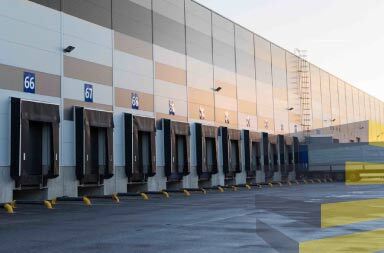
Docking bollards, like any safety feature in a logistics business, are a visual guide for outside material handlers and personnel inside the facility to drive cargo vehicles with caution. They are usually designed to withstand impact without damaging vehicles that collide with them.
These security bollards in Mexico are installed equidistant on both sides of the loading and unloading docks so that delivery trucks do not impact the doors or structural elements of the building. They are usually fitted with plastic covers or high-visibility reflective tape.
5) Traffic bollards
Unlike the safety elements located at loading docks, traffic bollards guide vehicles in the right direction and act as a protective barrier to prevent them from impacting the building. Again, they are designed to avoid damage upon impact.
It is also common for these bollards to use highly visible colors and be made of materials that are flexible and can bend without losing shape or breaking. Plastic is the most common.
6) Concrete bollards
Security bollards in Mexico can be made of different materials and qualities. Still, the most common and resistant ones have a steel structure and are filled with concrete. However, they can also be made of cement only, depending on where they will be installed.
For example, those that provide extra resistance to the impact of cargo vehicles are placed on the outside of buildings. Although they require little maintenance, they are more expensive to install, and changing or moving them implies their destruction, so it is best to plan their installation carefully.
Other protection barriers in a logistic facility
Alongside security bollards in Mexico, there are a variety of protectors that help minimize accidents and any incident that could put employees at risk and damage merchandise or facilities such as warehouse racks in Mexico. The following are the most indispensable:
Warehouse guardrails. Guardrails are safety elements that help delimit areas and protect structures from possible collisions. These barriers can be removable, fixed, polymer, and retractable.
Column protectors. While bollards and guardrails can be used as column protectors, it is also possible to use specifically designed protectors that help minimize the impact of forklifts or heavy machinery against building structures.
Safety gates. Security gates allow or restrict access to specific areas within the logistics business. They are significant when the entry and exit of products are high, as they prevent theft or loss of merchandise by allowing unauthorized persons to enter.
Serviap Logistics distributes & installs security bollards in Mexico
At Serviap Logistics, we are distributors and installers of security bollards in Mexico, Brazil, and the United States, where we follow the highest local standards. We also ensure that your warehouse or distribution center has other protective barriers, such as guardrails and column guards.
In addition to offering collision protectors, we are experts in racking, signage, floor marking, labeling, and cleaning of industrial warehouses in Mexico. As part of our project management services, we oversee a warehouse’s installation, renovation, or relocation from start to finish.
We meet tight deadlines without sacrificing quality or safety, which is why we are the partner of choice for several large, globally recognized companies in industries such as automotive, e-commerce, wholesale, and more.
Contact us to learn more about how we can help you.


